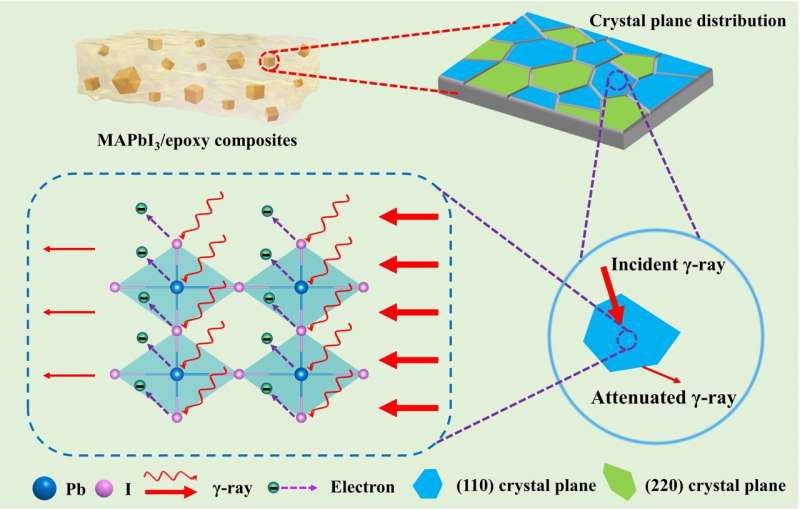Radiation shielding: MAPbI3/epoxy composites exhibit superior performance

Gamma rays can cause serious damage to the human body. Therefore, it is very important to develop gamma-ray shielding materials with excellent radiation shielding properties. To reach this goal, scientists in China invented a lightweight perovskite/epoxy composite that can effectively attenuate gamma rays by regulating its crystal plane. The technique will open new avenues for the effective mitigation of radiation risks in the aerospace and nuclear industries.
As a result of the rapid development of aerospace and nuclear industries, higher requirements are needed for the service life of detectors and the safety of staff. Gamma rays with extremely short wavelengths and strong penetration would cause serious damage to the detectors and staff. Therefore, gamma ray shielding materials with outstanding radiation shielding performance are essential.
However, the traditional lead shielding material is not suitable for further commercial applications due to its heavy weight and high toxicity. So, alternative lightweight materials with excellent radiation shielding performance that alleviate the radiation risks and reduce the costs have to be found.
In a new paper published in Light: Advanced Manufacturing, a team of scientists, led by Professor Xiaohong Wu from School of Chemistry and Chemical Engineering, Harbin Institute of Technology, China, and co-workers have developed a lightweight MAPbI3/epoxy composite prepared via a crystal plane engineering strategy.
These composites delivered excellent radiation shielding performance against gamma rays that were 10 times higher than the epoxy. MAPbI3 with altered crystal planes plays a determining role in the gamma-ray shielding performance of the corresponding composites.
Crystal plane engineering was shown to be an effective strategy to regulate the electron density of MAPbI3/epoxy composites, thereby controlling the possibility of collision between the incident gamma rays and MAPbI3/epoxy composites. The reported method and technique will open new avenues for designing and developing high-efficiency radiation shielding materials.
These scientists summarize the mechanism whereby crystal plane engineering regulates the gamma-ray shielding performance of MAPbI3/epoxy composites:
"When gamma rays (59.5 keV) reach the MAPbI3/epoxy composites, interaction between the incident gamma ray and the (110) plane or (220) plane induces the photoelectric effect. The electron density of the (110) plane is higher than that of the (220) plane.
"Therefore, it could be deduced that the attenuation of the incident gamma ray by the (110) plane is greater than that of the (220) plane because of the more effective collisions between the incident photons and extranuclear electrons. In other words, MAPbI3/epoxy composites with more (110) planes exhibited improved gamma-ray shielding performance."
"Crystal plane engineering is a useful strategy for the preparation of MAPbI3/epoxy composites with the aim of enhancing the gamma-ray shielding performance by increasing the electron density. The present work provides essential guidelines for the design and synthesis of high-efficiency radiation-shielding materials," they added.
More information: Kai Cui et al, Crystal plane engineering of MAPbI3 in epoxy-based materials for superior gamma-ray shielding performance, Light: Advanced Manufacturing (2022). DOI: 10.37188/lam.2022.051
Provided by Chinese Academy of Sciences





















